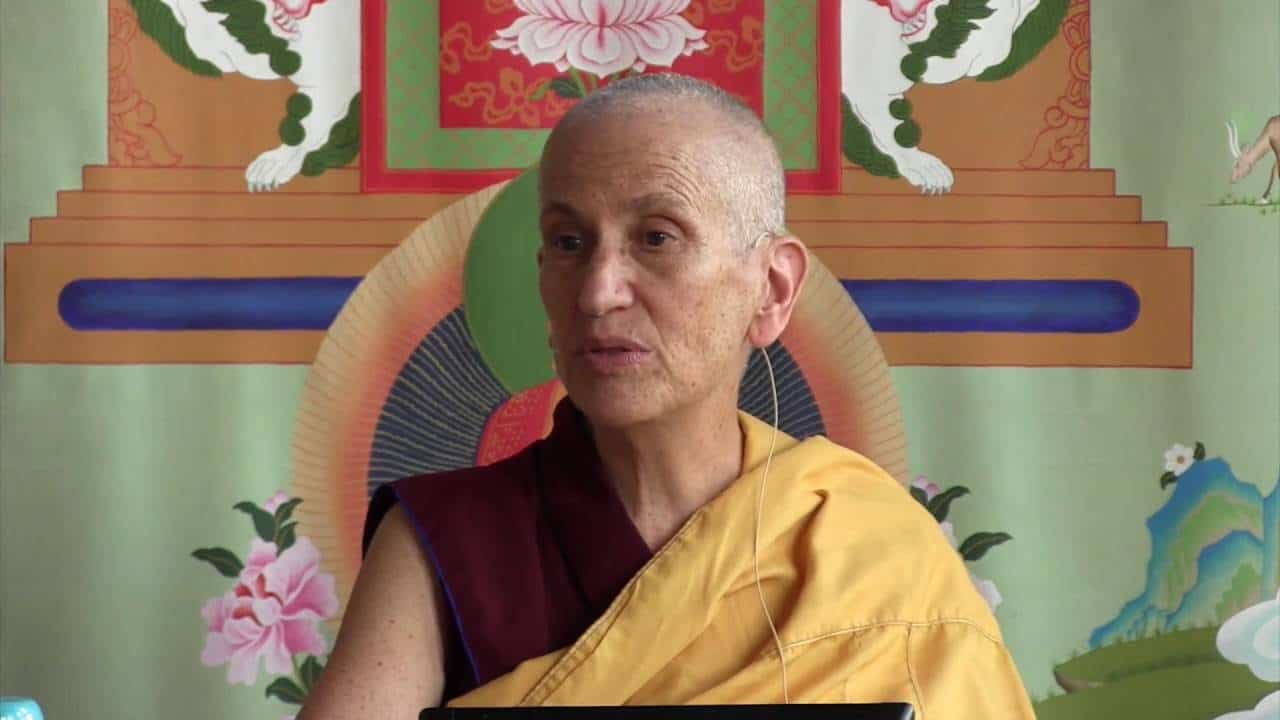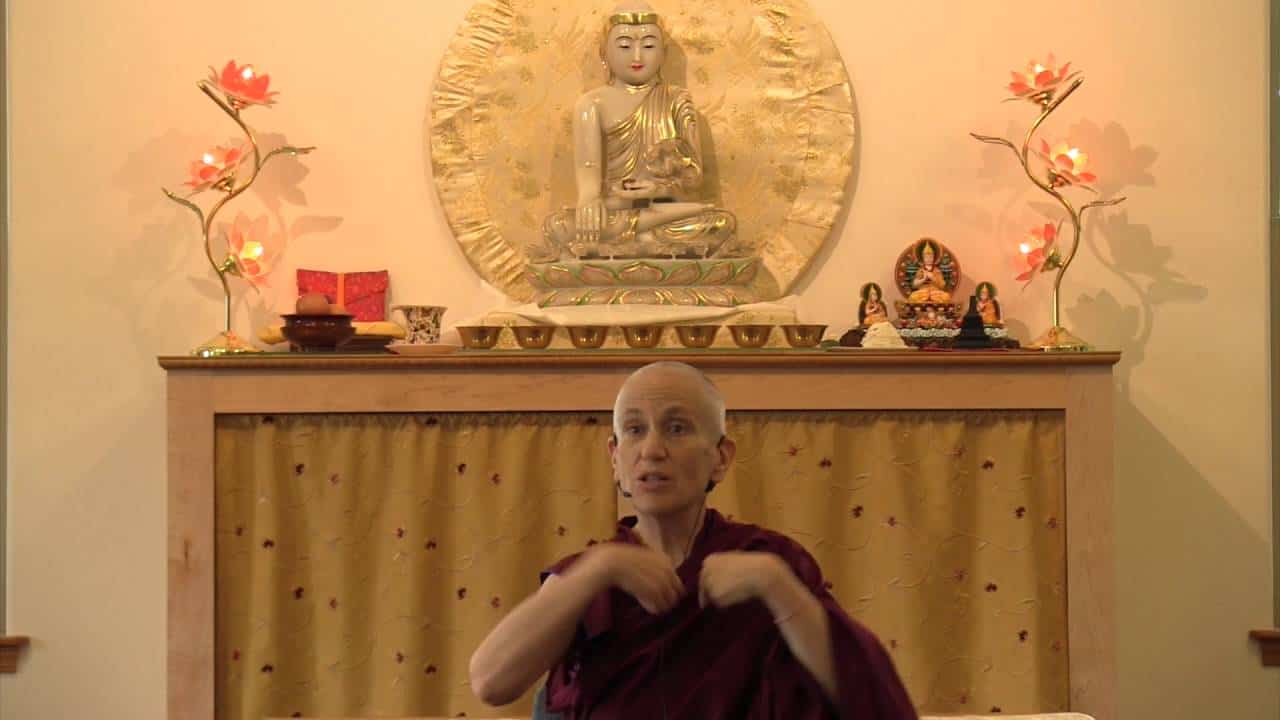Three types of compassion
Three types of compassion
The text turns to training the mind on the stages of the path of advanced level practitioners. Part of a series of teachings on the Gomchen Lamrim by Gomchen Ngawang Drakpa. Visit Gomchen Lamrim Study Guide for a full list of contemplation points for the series.
- Three types of compassion from Chandrakirti’s homage to great compassion
- Compassion observing migrators
- Compassion observing phenomena
- Compassion observing the unapprehendable
- Conventional truths are not actually truths
Gomchen lamrim 58: Three types of compassion (download)
Contemplation points
Consider the three types of compassion that are presented in Chandrakirti’s Supplement:
- Compassion for migrators:
- Because of the misapprehension of a strong “I” followed by “mine,” we look at everything in relationship to that big “I” and mine: this is MY body, MY mind, MY place to live, MY possessions, MY country, MY career, MY friends, MY enemies …Look at your own life and the lives of those around you. How does thinking in this way cause you suffering?
- Even if you get samsaric pleasure instead of great pain… then what? Does it lead to lasting happiness or does your attachment to samsaric pleasures only serve to perpetuate rebirth and dukkha?
- Seeing the situation we are all in as the result of our ignorance, anger, and attachment, and by grasping at “I” and mine, allow compassion for yourself and all beings to arise in your mind, then resolve to get involved in bringing about the end of suffering for sentient beings by developing your compassion and wisdom, by practicing the path to full awakening.
- Compassion observing phenomena:
- Consider that like a reflection of the moon in water, things are arising and ceasing, not remaining the same even for a split second. We too are under the influence of causes and conditions, and are thus impermanent. Consider things and people in your life. Consider your own life.
- When you have a real feeling that sentient beings do in fact disintegrate moment to moment, then you are able to negate the existence of both a permanent, partless and independent self (a permanent, eternal self or soul often asserted by non-Buddhists) as well as negate a self-sufficient, substantially existent self (controller of the aggregates). Because if we are changing all the time, this kind of self is impossible. In fact, the self exists as a mere designation on the basis of the aggregates. Reflect on this.
- With the impermanence of all beings fresh in your mind, allow compassion for yourself and all sentient beings to arise. How does getting a sense of the impermanence of beings lead you to a deeper level of compassion than simply recognizing their suffering?
- Compassion observing the unapprehendable:
- Consider that just like when you see the reflection of the moon in water, it looks like there is a moon right there in the water, the appearance of a self is false. The self does not exist in the way that it appears.
- With the emptiness of inherent existence of all beings fresh in your mind, allow compassion for yourself and all sentient beings to arise. How does getting a sense of the emptiness of inherent existence of beings lead you to a deeper level of compassion than simply recognizing their suffering and their impermanence?
Venerable Thubten Chodron
Venerable Chodron emphasizes the practical application of Buddha’s teachings in our daily lives and is especially skilled at explaining them in ways easily understood and practiced by Westerners. She is well known for her warm, humorous, and lucid teachings. She was ordained as a Buddhist nun in 1977 by Kyabje Ling Rinpoche in Dharamsala, India, and in 1986 she received bhikshuni (full) ordination in Taiwan. Read her full bio.


